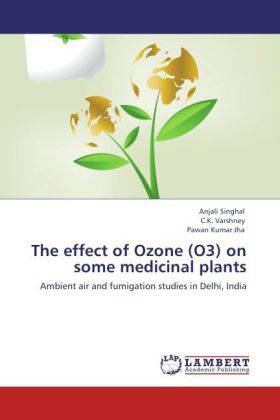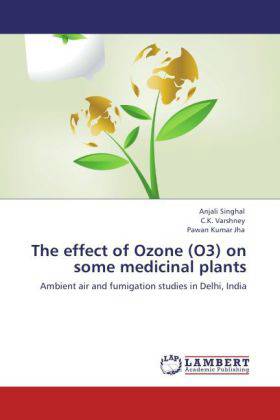
- Afhalen na 1 uur in een winkel met voorraad
- Gratis thuislevering in België vanaf € 30
- Ruim aanbod met 7 miljoen producten
- Afhalen na 1 uur in een winkel met voorraad
- Gratis thuislevering in België vanaf € 30
- Ruim aanbod met 7 miljoen producten
The effect of Ozone (O3) on some medicinal plants
Ambient air and fumigation studies in Delhi, India
Anjali Singhal, C. K. Varshney, Pawan Kumar Jha
Paperback | Engels
€ 62,45
+ 124 punten
Omschrijving
Researchers working on air pollutants and their effect on plants will find this book interesting. Among various air pollutants this book focuses on ozone. Ozone (O3) is one of the most serious phytotoxic air pollutants. Current impacts of the oxidant air pollutant, ozone (O3), on vegetation are substantial, essentially global and increasing with rising population and industrialization. Most of the studies on the effect of ozone are confined to agricultural crop plants, fiber crops and gymnosperms. Studies on medicinal plants, an important group of economically important plants, which play a major role in health care system, are lacking. With growing industrialization and fossil fuel consumption ground level ozone concentration are likely to increase in future but it is not known how the medicinal plants are going to respond to this inevitable factor. This study was taken up with the purpose of studying the response of some important local medicinal plants against ozone stress.
Specificaties
Betrokkenen
- Auteur(s):
- Uitgeverij:
Inhoud
- Aantal bladzijden:
- 64
- Taal:
- Engels
Eigenschappen
- Productcode (EAN):
- 9783848484263
- Verschijningsdatum:
- 14/05/2012
- Uitvoering:
- Paperback
- Afmetingen:
- 152 mm x 229 mm
- Gewicht:
- 104 g

Alleen bij Standaard Boekhandel
+ 124 punten op je klantenkaart van Standaard Boekhandel
Beoordelingen
We publiceren alleen reviews die voldoen aan de voorwaarden voor reviews. Bekijk onze voorwaarden voor reviews.










